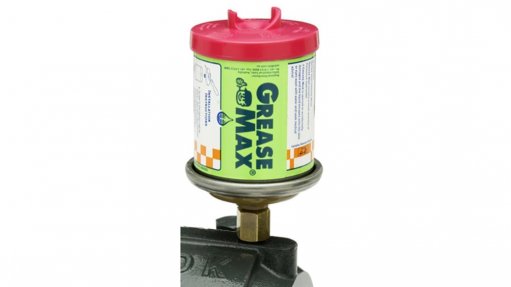
GreaseMax continuous lubrication helps prevent bearing damage caused by water
SPONSORED POST (Virtual Showroom) Water contamination is a source of bearing failure that is often overlooked but may significantly affect bearing life. Ensuring the prevention of water contamination helps to optimise bearing effectiveness and extend the lifespan of equipment.
An important part of prevention of water ingress is to ensure that seals are maintained in good condition and that labyrinth seals are continuously fully grease purged. Maintaining continuous re-lubrication of bearings helps to ensure the progressive and continuous replacement of lubricant and to purge contaminated grease from bearings.
GreaseMax asserts that its lubricators provide proven results, with continuous lubrication and grease replenishment for bearings and the maintenance of flow-through purging of seals. GreaseMax provides an effective solution to the problems of contamination and bearing damage caused by water ingress and condensation. Using GreaseMax continuous lubrication provides a low-cost solution with considerable maintenance and productivity benefits.
All bearings may be susceptible to water contamination, not just those used in wet operating conditions or in equipment such as pumps, that use bearings near liquids. Condensation occurs as hot conditions become cool during the day or change to cold conditions at night, causing water in the air trapped inside equipment to become a condensate. This condensation inside equipment housing can lead to water contamination of grease. Atmospheric humidity may also cause degradation of the grease through water contamination.
Processes such as wash downs with high pressure hoses are also likely to force water back into the housing though the seals, unless seals are well maintained and kept in good condition and are continuously and fully grease purged.
The limit for absolute water content in mineral oil, which is the lubrication component of most greases, is 200 ppm. Higher water content can cause several lubrication problems and may lead to the failure of grease’s lubrication and protection properties. The higher the water contamination, the worse the result, but lubrication failures can start to occur with only small levels of water contamination in grease.
The performance of oils and additives in grease is critical to lubrication outcomes and the breakdown of oil film strength reduces oil’s ability to separate rolling elements under load, leading to damaged surfaces, which in turn causes roughness that prevents hydro-dynamic oil film separation of rolling surfaces. This causes accelerated wear and surface damage leading to bearing failure.
Water is a major cause of corrosion and allows acids to be formed because of the lubricant breakdown and subsequent release of sulphurs from the oil and anti-wear and extreme pressure, or EP, additives in the grease. The formation of acids is not only corrosive but also leads to the grease being additive-depleted and unable to perform its original, required lubrication.
The presence of water also causes hydrogen-induced embrittlement and cracking. Acceleration of the hydrogen-induced fracture process starts with water contamination and is advanced by corrosion and electrolysis, causing the rolling elements and raceways to become etched and pitted. This surface damage then causes high temperatures at the point of load, because of the loss of oil film separation between the damaged surfaces, resulting in further oxidation of the oils in the grease and adding to corrosion and bearing damage.
GreaseMax continuous lubrication helps prevent bearing damage caused by water contamination and is available from Delta Distribution.
For more information, visit Creamer Media’s Virtual Showroom